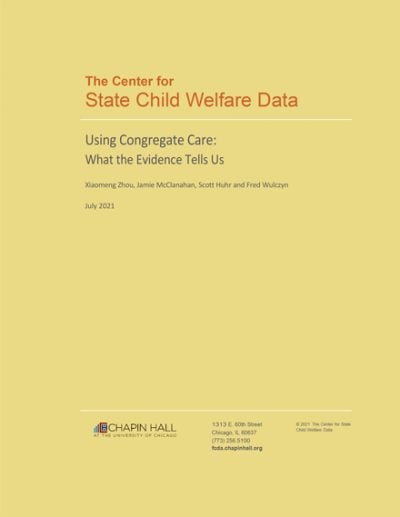Youngest Kids Least Likely to Begin in Group Care
The likelihood of an initial out-of-home placement being in a group care setting was lowest (8%) for children below the age of 9 and highest (42%) for youth ages 16 to 17.

A new report, conducted by the Center for State Child Welfare Data and commissioned by the Annie E. Casey Foundation, focuses on kids entering group settings for their first child welfare placement. It explores how likely this placement is, how long and stable it is, and how often it results in achieving permanency or a return to out-of-home care.
To complete this study, researchers analyzed demographic data for each child — their age, gender, race and ethnicity and urbanicity — to determine how or if these factors played a role in their group care experience. They found a significant relationship between age, race and ethnicity, and the utilization of group placements. They also noted that such connections are best understood within the context of the local child welfare system and its local service offerings.
Learn who is eligible for child welfare stimulus funds in your state
When a child enters out-of-home care, he or she can be placed into group care, foster care, kinship care, or other types of care. This report focuses on children whose initial out-of-home placement was in group care from 2012 to 2019.
Despite longstanding criticisms and calls for less restrictive placement settings, group care is often used to meet the complex behavioral and mental health needs of children and youth who cannot live at home and serves as an alternative to short stays in treatment facilities. Also called congregate care, this placement type is an important component of the child welfare care continuum.
In this study, researchers analyzed data from 15 states over an eight-year period. They found that more than 718,500 kids entered out-of-home care for the first time with approximately 15% of this population — over 104,000 kids — beginning in group care.
Group settings are “a much more heterogeneous experience for young people than we generally acknowledge,” the researchers found. No two states operate the same group care system, and documenting these between-state differences — and comparing them — can help leaders both effectively manage the use of group care and generate policies that are globally beneficial.
The study also notes that, since the private sector provides the majority of the nation’s group care, it’s important to understand how these agencies are reimbursed. Most — if not all — congregate care policy is organized around the answers to two important questions: 1) who should be placed in group care (i.e., when is it appropriate to do so); and 2) what services should be paid for within this placement type.
The group care provisions in the Family First Prevention Services Act (FFPSA) target the “who” by limiting federal funding eligibility to children who meet certain thresholds and the “what” by reinforcing the role that qualified residential treatment programs play on the care continuum. Absent from this discussion — but important — is a conversation about how the methods of reimbursing group care providers can influence their care delivery and if this potential influence is at odds with social policy. The report’s authors note that viewing group care utilization through this lens can yield powerful insights and help to ease the hard work of aligning fiscal and social policy.
The federal FFPSA emphasizes family-based placements and establishes requirements for putting children in residential treatment programs. These regulations are designed to improve the quality and oversight of services in residential care, or — as defined by the FFPSA — child care institutions.
The FFPSA creates a timeline of milestones tying child care services to federal reimbursement. It establishes requirements for the timing of assessments, court decisions, transition periods, and the supporting documentation mandatory for children who continue to stay in a child care institution placement after one fiscal year.
Researchers looked at where children went after starting their child welfare experience in a group care setting. They noted three possible outcomes:
Of the 104,219 children placed into group care, 23,757 (23%) experienced permanent exits. The most common way that kids left group care — experienced by 64% of the kids who started in group care — was by moving to another type of care.